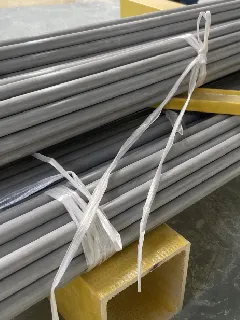loading...
- No. 9, Xingyuan South Street, Dongwaihuan Road, Zaoqiang County, Hengshui, Hebei, China
- admin@zjcomposites.com
- +86 15097380338
- Welcome to visit our website!
Durable Fiberglass Reinforced Plastic Grating Solutions for Industrial and Commercial Applications
The Advantages of Fiberglass Reinforced Plastic Grating
Fiberglass reinforced plastic (FRP) grating is becoming increasingly popular in various industries due to its outstanding properties and versatility. As a composite material, FRP combines the strength of fiberglass with the lightweight and corrosion-resistant characteristics of plastic. This unique composition results in a superior product, suitable for a wide range of applications, including flooring, walkways, platforms, and even marine structures.
Corrosion Resistance
One of the most significant advantages of FRP grating is its exceptional resistance to corrosion. Traditional materials such as steel and aluminum often succumb to rust, especially in harsh environments like chemical plants or coastal areas. In contrast, FRP grating is not susceptible to oxidation and can withstand exposure to a variety of harsh chemicals, making it ideal for environments where corrosive substances are present. This property not only extends the lifespan of the product but also reduces the need for maintenance and replacement, leading to cost savings over time.
Lightweight yet Strong
While fiberglass reinforced plastic grating is lightweight, its strength is comparable to that of steel. This makes it easier to handle and install, reducing labor costs and installation time. The lightweight nature of FRP grating also means that structures require less support compared to heavier materials, allowing for more flexible design choices. The impressive strength-to-weight ratio of FRP grating makes it a preferred choice in applications such as industrial flooring and mezzanines where heavy loads must be supported without compromising safety.
Safety Features
fibreglass reinforced plastic grating

Safety is a crucial concern in many industrial and commercial settings, and FRP grating excels in this area. Many FRP grating products come with a slip-resistant surface, reducing the risk of accidents in wet or oily environments. Furthermore, being non-conductive and low thermal conductivity, FRP is a safer option for electrical applications and environments exposed to extreme temperatures.
Environmental Considerations
In today's environmentally conscious world, the green credentials of materials are becoming increasingly important. FRP grating is often manufactured with a lower environmental impact compared to traditional materials. The production process for FRP consumes less energy, and many manufacturers are using recycled materials in their formulations, making FRP grating an eco-friendly choice. Additionally, its long lifespan and minimal maintenance contribute to reduced waste and lower overall environmental impact.
Versatility in Design
Another notable feature of FRP grating is its versatility in design. Available in various colors, sizes, and thicknesses, it can be tailored to suit the specific needs of different applications. Whether it's for pedestrian walkways, heavy-duty industrial areas, or aesthetic architectural features, FRP grating can be customized to meet the demands of any project.
Conclusion
In summary, fiberglass reinforced plastic grating is a multi-functional material that offers numerous advantages over traditional building materials. Its unmatched resistance to corrosion and lightweight strength make it ideal for a variety of industrial and commercial applications. The added safety features, environmental benefits, and design versatility further solidify its status as a modern solution for construction needs. As industries look for ways to improve efficiency, safety, and sustainability, FRP grating stands out as a leading choice for the future.
-
GRP Structures: The Future of Lightweight, High-Performance EngineeringNewsJun.20,2025
-
FRP Water Tank: High-Performance Storage for Corrosive and Clean Water SystemsNewsJun.20,2025
-
FRP Square Tube: The New Industry Standard for Chemical and Structural ApplicationsNewsJun.20,2025
-
FRP Pultruded Profiles: The Ultimate Choice for Lightweight Structural StrengthNewsJun.20,2025
-
FRP Handrails: The Safer, Smarter, and Stronger Choice for Modern InfrastructureNewsJun.20,2025
-
FRP Grating: The Smart Solution for Durable, Lightweight Industrial FlooringNewsJun.20,2025
-
Why Choose a Galvanized Water Tank for Your Storage NeedsNewsMay.21,2025
